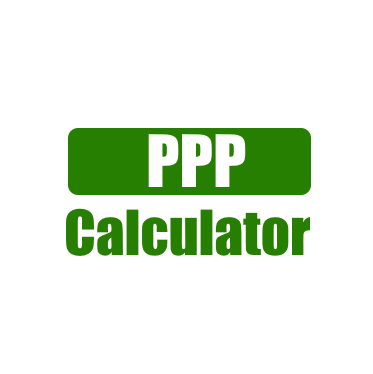
How Purchasing Power Parity is Applied?
How Purchasing Power Parity is Applied?

Monetary policymakers use the buying power conversion scale to change over the cash of an objective country into a uniform money material to all countries across the globe. Generally, this normal money indicates the US dollar (global dollar). It is cash projected as a benchmark. How Purchasing Power Parity is Applied?
The understudies and specialists having Financial matters as their significant subject, should seriously mull over a wide range of wares and administrations to make a significant examination of current costs across countries. In any case, an endeavor for a balanced value correlation is troublesome because of the significant information volume that one needs to accumulate and go through the complexities of the said examinations. Late in 1968, the Unified Countries and the College of Pennsylvania mutually founded the ICP (Worldwide Examination Program).
With this exploratory program, the buying power equalities set off by the ICP have made a reason at a worldwide cost review. This review looks at the costs of millions of unmistakable sorts of wares and administrations. How Purchasing Power Parity is Applied?
Accordingly, this program colossally assists Indian and worldwide macroeconomists with surveying efficiency and development internationally. Furthermore, the World Bank distributes a pertinent report that looks at the development and efficiency of different countries in accordance with the buying power equality and global cash (US dollars).
The IMF (International Monetary Fund) and OECD (Organisation for Economic Cooperation and Development) apply weights on purchasing power parity parameters to make predictions and recommend appropriate economic policies. These recommendations imply instant, short-term effects on financial markets.
Some eminent forex traders utilise purchasing power parity to detect prospective undervalued overvalued currencies. Besides, those holding bonds or stocks of foreign companies may use the ICP study’s purchasing power parity statistics to forecast the effect of exchange rate variations on any country’s economy and subsequent investments.
Nominal GDP and GDP Driven by Purchasing Power Parity
Before understanding the concept of pairing purchasing power parity with gross domestic product, you must know the terms Nominal GDP and GDP by purchasing power parity. How Purchasing Power Parity is Applied?
1. Nominal GDP
Ostensible Gross domestic product represents a country’s monetary result by embracing current market costs. It doesn’t quantify the abberations in that frame of mind of living or buying power among different nations. Plus, ostensible total national output considers the worth of products and administrations delivered in a nation using winning trade rates. It conveys a simple proportion of a country’s monetary shape.
However, it may not precisely reflect the relative purchasing power or standard of living across nations. Nominal GDP usually finds its existence in an international comparison of the prices of goods and services.
2. GDP Driven by Purchasing Power Parity
Public and worldwide monetary policymakers change a country’s financial result by considering human cost for many everyday items and relative buying power qualifications. Gross domestic product PPP works out the natural worth of wares and administrations made in a country in similarity with a standard arrangement of cost structures, eminently got from a worldwide correlation bushel.
Gross domestic product PPP checks the truth that a comparative measure of cash can purchase different wares and administrations in various nations. It gives a more fitting examination of the country’s way of life and financial solace. Gross domestic product PPP successfully analyzes destitution rates, expectations for everyday comforts, and financial government assistance across topographical limits.
A few contemplations by financial specialists go past limits by changing Gross domestic product for buying power equality esteem.
Example
A relevant outline can support how GDP and buying power equality work for any public economy. Assume a readymade sets of marked organization pants costs $20 in the US, and the indistinguishable sets of pants is accessible in Germany for €12. Post transformation in dollars per the common conversion standard, the cost of the pants in Germany may speculatively be $25. In like manner, the buying power equality condition ought to be 25/20 or 1.25.
To put it another way, while purchasing with an euro, for each $1.25 spent in Germany for a couple of pants, it will cost $1 in the US to buy an indistinguishable sets of pants. This model explains how buying power equality matches with total national output.
Nominal Disadvantages of Purchasing Power Parity
However irrelevant, driving financial specialists refer to the accompanying elements to make sense of the explanations for the way that the idea of buying power equality doesn’t adequately grandstand an unmistakable impression of the real world:
- A nation’s state and focal deals charge, similar to Tank can add to an ascent in customer labor.
- Transport Expenses: Homegrown brokers import merchandise that are inaccessible in the nation, bringing about significant freight costs. These consumptions incorporate fuel and, in particular, significant import obligations. Also, imported merchandise will sell at greater costs than comparable privately obtained items.
- Non-Exchanged Administrations: Non-exchanged administrations incorporate information costs that businesses don’t use for exchanging. These costs comprise of work, utility, and protection costs. These info costs don’t reestablish equality with those at the worldwide level.
- Intercession by State Specialists: Duties forced by the public authority hardware can truly blow up the costs of imported products. You can see that indistinguishable products in different nations sell generally less expensive.
- Interior Market Contest: Labor and products might be sold all the more purposely at greater costs in a particular homegrown market. In specific situations, greater costs win on the grounds. This business could partake in a syndication or have a place with a cartel of business substances.



